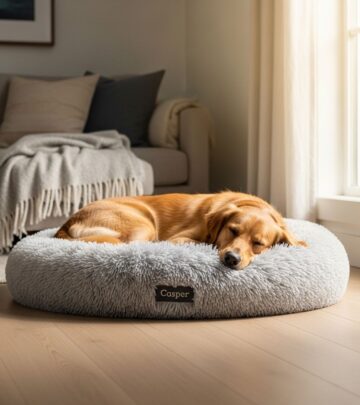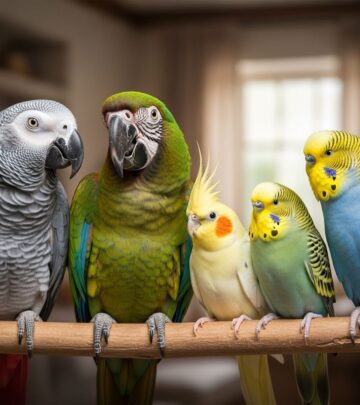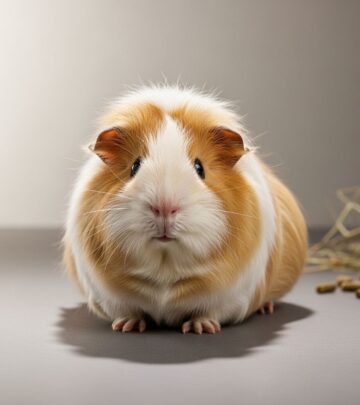Boxer Dog Breed: Expert Guide To Personality, Care & History
Discover energetic companions, grooming tips, and fascinating origins of this loyal friend.

Image: HearthJunction Design Team
Boxer Dog Breed: Complete Guide to Personality, Care, and History
The Boxer is an energetic, intelligent, and affectionate companion, celebrated for its athleticism, loyalty, and playful spirit. This comprehensive guide covers everything you need to know about the Boxer dog breed, including their history, unique personality traits, physical characteristics, health requirements, care tips, and frequently asked questions.
Table of Contents
- Breed Overview
- History and Origins
- Physical Characteristics
- Personality and Temperament
- Boxer Care
- Training and Socialization
- Exercise Needs
- Health Concerns
- Living with a Boxer
- Fun Facts about Boxers
- Frequently Asked Questions (FAQs)
Breed Overview
- Group: Working
- Origin: Germany
- Height: 21–25 inches (53–64 cm) at the withers
- Weight: 65–80 pounds (30–36 kg)
- Life Span: 10–12 years
- Coat: Short, smooth, tight-fitting
- Colors: Fawn or brindle, often with white markings
- Personality: Energetic, playful, loyal, intelligent, instinctive guardian
History and Origins
The Boxer was developed in late 19th-century Germany, descending from two notable breeds: the now extinct Bullenbeisser—a powerful hunting dog used for chasing and bringing down large game—and the sturdy Old English Bulldog. The breed’s ancestors were known for their courage and tenacity, originally employed to hunt formidable prey such as wild boar, bison, and bear on sprawling estates. Over time, the Boxer was refined to become a strong, versatile dog known for its working abilities and as a cherished companion.
The first Boxer club was founded in 1895, and the breed debuted in a Munich dog show the following year. The American Kennel Club (AKC) recognized the breed in the early 20th century. Today, Boxers remain popular as family pets, show dogs, and service animals thanks to their intelligence and adaptability.
Physical Characteristics
- Build: Boxers are medium to large, squarely built dogs with strong, muscular bodies.
- Head: They have a distinctive square muzzle, pronounced underbite (mandibular prognathism), broad skull, and a signature black mask.
- Coat: The coat is short, smooth, and lies close to the body, showing off their athletic physique.
- Color: Typical colors are fawn (ranging from tan to reddish brown) or brindle (dark stripes on a lighter background), sometimes with white markings on the chest, face, or paws.
- Expression: The Boxer’s face conveys intelligence and alertness, often giving a slightly mischievous look.
| Trait | Description |
|---|---|
| Height | 21–25 inches (53–64 cm) |
| Weight | 65–80 lbs (30–36 kg) |
| Coat Colors | Fawn, Brindle, with/without white |
| Life Expectancy | 10–12 years |
Personality and Temperament
Boxers are renowned for their boundless energy, playfulness, and affectionate disposition. They bond closely with family members and are especially known for their enthusiasm and love for children. The breed is patient and tolerant, making it one of the best choices for families, but their exuberance may overwhelm very small toddlers if not supervised.
Instinctive protectors, Boxers are alert and watchful without being aggressive or vicious by nature. Their confident demeanor and natural guarding instincts make them exceptional watchdogs. However, Boxers also crave companionship and may develop separation issues if left alone for extended periods.
- Affectionate and Loyal: Extremely devoted to their families.
- Playful and Energetic: Always ready for fun, eager to play and interact.
- Protective Instinct: Natural guardians without undue aggression.
- Intelligent and Curious: Quick learners, enjoy mental stimulation.
- Sociable: Generally good with children and other pets when well-socialized.
Boxer Care
Boxers thrive on human interaction and require a balanced mix of physical activity, mental stimulation, and companionship to remain happy and healthy. Their care routine focuses on exercise, training, nutrition, and regular health checkups.
Feeding and Nutrition
- Feed high-quality commercial or home-cooked dog food formulated for large, active breeds.
- Divide daily food into two meals to aid digestion and reduce risks of bloat.
- Adjust quantities based on age, weight, activity level, and veterinarian advice.
Grooming
- Boxers have low-maintenance coats; a weekly brushing removes loose hair and maintains their sheen.
- Bathe only as needed—excessive washing can dry their skin.
- Regularly check and clean ears, teeth, and trim nails to prevent problems.
Health Maintenance
- Schedule annual veterinary checkups and stay current with vaccinations and parasite prevention.
- Monitor for common breed-specific health issues (see below).
Training and Socialization
Boxers are intelligent and eager to please but can be strong-willed. Early socialization and training are paramount to raising a well-mannered adult. Positive reinforcement methods—using rewards such as treats, toys, and praise—are most effective.
- Start Early: Begin socialization and basic obedience training as a puppy.
- Positive Reinforcement: Reward-based techniques yield the best results.
- Consistency is Key: Set firm but gentle boundaries and maintain consistent expectations.
- Expose to New Experiences: Gradually introduce Boxers to people, noises, environments, and other animals.
Boxers are bright, but their playful spirit may translate into stubbornness, so patience is crucial during training sessions. Ongoing mental stimulation, such as puzzle toys and advanced obedience exercises, will keep them mentally agile.
Exercise Needs
High energy is a hallmark of the Boxer breed. They need daily exercise to remain healthy and content. Insufficient activity can lead to boredom and destructive behaviors.
- Provide at least 1–2 hours of exercise daily, including brisk walks, runs, and playtime.
- Boxers enjoy activities such as fetch, agility training, and interactive games.
- A securely fenced yard is ideal for safe, off-leash play.
- Due to their short snouts, avoid strenuous exercise in hot or humid weather.
Health Concerns
Like all breeds, Boxers are predisposed to certain health conditions. Responsible breeders conduct health screenings to minimize these risks. Common health issues include:
- Heart Conditions: Especially boxer cardiomyopathy (arrhythmogenic right ventricular cardiomyopathy), which can cause irregular heartbeats, fainting, or even heart failure.
- Brachycephalic Syndrome: Due to their short, broad skulls, Boxers may experience breathing difficulties, particularly in hot, humid environments.
- Hip Dysplasia: Malformation of the hip joint, common in medium-to-large breeds.
- Cancer: Boxers have a higher incidence of certain cancers, such as mast cell tumors and lymphoma.
- Thyroid Issues: Hypothyroidism is occasionally reported.
- Allergies and Skin Problems: Their short coat can make them prone to skin irritations.
Regular vet visits and early intervention help manage these conditions effectively. It’s strongly recommended to seek breeders who perform health testing for heart, hip, and other genetic disorders.
Living with a Boxer
Boxers adapt well to various home environments as long as their need for exercise and companionship is met. They do best in households where someone is often around, as they can develop anxiety if left alone for long periods.
- Best For: Active families, singles, or couples willing to invest time in daily exercise and play.
- Good With Children: Known for their patience and gentleness with kids, but always supervise play with small children due to their exuberance.
- Other Pets: Generally get along with other dogs and pets when socialized early; may be less tolerant toward unfamiliar adult dogs of the same sex.
- Space Requirements: Thrive in homes with a yard, but can adapt to apartment life with sufficient outdoor activity.
Fun Facts about Boxers
- Boxers get their name from their playful tendency to stand on their hind legs and “box” with their front paws.
- Famous Boxer owners include Humphrey Bogart and Lauren Bacall, who received a Boxer puppy as a wedding gift in 1945 and frequently featured their dogs in publicity photos.
- The breed has roots that trace back to ancient Assyrian war dogs.
- Boxers are one of the most popular breeds in the United States, known for their adaptability and charm.
Frequently Asked Questions (FAQs)
How much exercise does a Boxer need?
Boxers thrive on daily activity and require at least 1–2 hours of exercise every day, including walks, runs, and vigorous play sessions. This helps prevent boredom and destructive behaviors.
Are Boxers good with children?
Yes, Boxers are famously patient and playful with children, making them ideal family pets. Their enthusiasm may overwhelm very small children, so supervision is recommended during playtime.
Are Boxers aggressive?
By nature, Boxers are not aggressive or vicious. They are instinctive guardians and can be protective, but proper training and socialization ensure they are well-mannered with people and other pets.
How long do Boxers live?
Boxers generally live between 10 and 12 years when provided with proper care, nutrition, and regular veterinary visits.
Do Boxers require a lot of grooming?
No, Boxers are low-maintenance in terms of grooming. Their short, smooth coat requires only weekly brushing and occasional baths.
Are Boxers suitable for apartment living?
Boxers can adapt to apartment living if given ample daily exercise and opportunities to burn energy outdoors.
What are common health concerns for Boxers?
The breed is prone to certain health issues like heart disease (especially boxer cardiomyopathy), hip dysplasia, and cancers. Regular veterinary care and responsible breeding greatly reduce these risks.
How intelligent are Boxers?
Boxers are intelligent, quick learners who respond well to positive training methods. They enjoy mental challenges and excel in activities that require agility and obedience.
Do Boxers drool a lot?
Boxers may drool occasionally, especially after exercise or while eating, though they are not considered heavy droolers compared to some other breeds.
Conclusion
The Boxer is an adaptable, loyal, and high-spirited companion who brings joy and energy to any home. With the right balance of training, exercise, affection, and preventative health care, Boxers can thrive as loving family members and devoted friends. Whether you’re considering adding a Boxer to your household or you’re a seasoned owner seeking to know more, this versatile breed remains a cherished favorite worldwide.
References
Read full bio of Anjali Sayee












